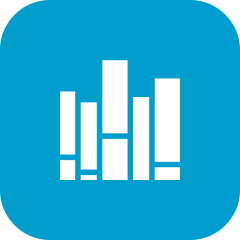✕




There are now a multitude of apps designed to help you improve some aspect of your life, whether it be your fitness, mental health, or education. Runkeeper, Headspace and Duolingo can be powerful motivators, largely thanks to the fact their clever designs mean they feel less like chores and more like games.
There are a number of principles that go into successfully gamifying an app, with goals and rewards perhaps the most obvious. These are an app’s capability to set targets for an individual, and recognise when a user achieves them. Unrealistic and vague goals – especially with no acknowledgement of success – aren’t particularly motivating.
App developers have a number of tools at their disposal to encourage users towards goals. One is tracking progress and relaying that information to the user both clearly and accurately. Graphs, charts or numbers are all straightforward ways of showing a user how far they’ve come, and how much further is left to go.
Going hand in hand with progress tracking are prompts: reminders from an app to put in that little bit of extra work to hit a goal. This could be something as simple as a notification or a text message updating a user on their progress.
The last two important elements are a sense of control and social interaction. Users need to feel like an app is empowering them towards their goals, rather than just manipulating them. For social interaction, the ability for a user to share their progress with friends adds a layer of competition.
However, there is a delicate balance between a user feeling an app offers positive encouragement and exhausting manipulation.
Our research found users of these kinds of apps were driven by two different forms of motivation: hope and compulsion. Hope represents a user’s belief that an app can help them reach their goals. Users keep their focus on the goal and the app supports them towards that end.
On the other hand, users expressing compulsion experience something more akin to addiction. They are using the app, but find it tiring and frustrating, or feel they are relying on it to an unhealthy degree. These users might be working towards their goals, but the “hook” of the application is more compelling than the outcome.
How these different motivating forces affect the long-term profitability of apps is intriguing. Our research has found that, over time, there is a stronger link between hope and users making a purchase than compulsion.
In compulsion, the act of using the app and the positive feedback it provides is a user’s focus; while it might be effective for a while, its novelty will eventually wear off and people will inevitably stop using it. People focused on goals retain a more positive relationship with apps since the outcome of using the app is their focus, not just using the app itself. In terms of enhancing customer engagement, the latter is a stronger force.
The full version of this article can be found on IB Knowledge.